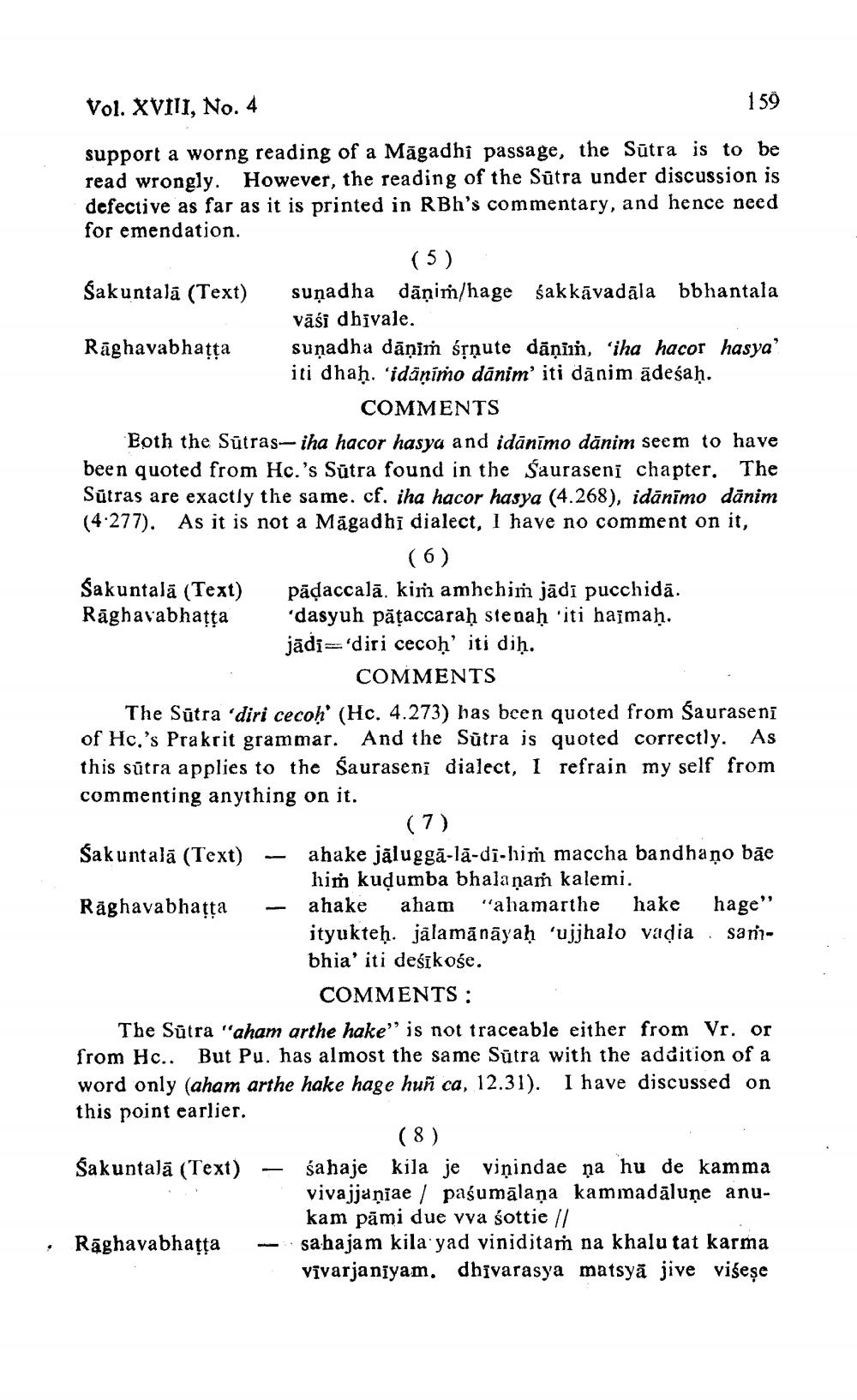________________
Vol. XVIII, No. 4
159
support a worng reading of a Māgadhi passage, the Sūtra is to be read wrongly. However, the reading of the Sūtra under discussion is defective as far as it is printed in RBh's commentary, and hence need for emendation.
(5) Śakuntala (Text) suņadha dāņiṁ/hage sakkāvadāla bbhantala
vāśi dhivale. Rāghavabhațţa sunadha dānim śrnute dāniin, 'iha hacor hasya'
iti dhaḥ. 'idāņiño dánim' iti dānim adeśaḥ.
COMMENTS Eoth the Sūtras- iha hacor hasya and idānimo dānim seem to have been quoted from Hc.'s Sūtra found in the Sauraseni chapter. The Sutras are exactly the same. cf. iha hacor hasya (4.268), idānimo dānim (4.277). As it is not a Māgadhi dialect, I have no comment on it,
(6) Śakuntalā (Text) pādaccalā. kim amhehim jādi pucchidā. Rāghavabhatta 'dasyuh păţaccaraḥ stenah iti hajmah.
jādi='diri cecoh' iti diḥ.
COMMENTS The Sūtra 'diri cecoh' (Hc. 4.273) has been quoted from Sauraseni of Hc.'s Prakrit grammar. And the Sūtra is quoted correctly. As this sūtra applies to the Sauraseni dialect, I refrain my self from commenting anything on it.
(7) Sakuntalā (Text) - ahake jālugga-la-di-him maccha bandhaņo bae
him kudumba bhalanaṁ kalemi. Rāghavabhatta ahake aham "ahamarthe hake hage"
ityukteh. jālamā nāyaḥ 'ujjhalo vadia · saribhia' iti deśīkośe. COMMENTS:
The Sūtra "aham arthe hake" is not traceable either from Vr. or from Hc.. But Pu. has almost the same Sūtra with the addition of a word only (aham arthe hake hage hun ca, 12.31). I have discussed on this point earlier.
(8) Sakuntalā (Text) – sahaje kila je viņindae na hu de kamma
vivajjaņiae / pašumālaņa kammadāluñe anu
kam pāmi due vva sottie // . Rāghavabhatta - sahajam kila yad viniditaṁ na khalu tat karma
Vīvarjaniyam. dhivarasya matsya jive višeşe




